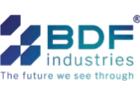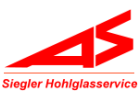How and when did you get started in the glass industry?
I got started in the glass industry in October 1980. I graduated with a degree in Chemical Engineering from Nottingham University (UK) in 1975, and got a job in the refractory industry, optimizing the operation of kilns for refractory production. I saw an ad for a position with a company called KTG as a Combustion Engineer, which I applied for and got. I did not deliberately choose it because it was in the glass industry, I chose it because it sounded interesting. I guess you could say that glass chose me; it turned out to be a good thing. I have enjoyed my career in glass.
How long have you been here in the US?
I came to the US in 1993, so I have been here for 28 years. Half of my career was in Europe and half of my career has been in the United States.
How did you get started in furnace design?
When I started with KTG, the glass industry was certainly different than it is now. There were more companies making glass and more furnaces but the furnaces did not last as long and they used more energy. Back then, more often than not, business was conducted with a handshake rather than a formal contract. In the late 80’s, things changed and companies started wanting contracts and – with them, – a guarantee of the pull, glass quality and energy efficiency. The industry had to start thinking about furnace design: How big is it? What type of fuel will it use, and how much? What kind of heat recovery system will it have? In answering these, and other questions, I sort of evolved into furnace design.
How has the process of designing furnaces changed over the years?
The technologies have certainly advanced, but regenerative glass furnaces were invented by the Siemens Brothers in the late 1700’s. I am sure if they came back and went to a glass works today, they would recognize that they were the great-great-great-grandparents of the furnace design. Glass furnaces have evolved, but they are still recognizable for what they were originally designed for.
The big question mark hanging over everyone’s head, is what to do about climate change, greenhouse gasses and carbon dioxide? It is going to have a big impact on the way glass is produced and specifically, recycled. We cannot continue to dig raw materials out of the ground, chuck them into a furnace, and melt them. When I first started my career 40+ years ago, no one was worried about carbon. We thought about energy efficiency strictly in terms of cost savings, not planet savings. We realize now that both are important.
Having worked in the glass industry all of these years and living on two continents, were there and are there still a lot of differences even culturally and how companies approach the glassmaking process. Yes, in Europe energy is more expensive than over here in the US, so much more emphasis is placed on energy efficiency, insulation in furnaces, and heat recovery systems.
When there was a spike in energy costs in the US a few years back, people in the US certainly became more interested in what benefits can be realized by insulating their furnaces, but then fracking ramped up and natural gas became cheap again. Greater energy efficiency is definitely something that producers in the US could explore to improve their operations and their bottom line.
You have designed and engineered many furnaces in your career, is there any particular project that stands out to you?
It is hard to pick just one, but there were a few where the outcome was very satisfying for me and a good outcome for TECO. The Quinn Glass cross-fired container furnaces in England (Now Encirc Glass, part of the Vidrala Group) turned out to be a remarkably successful furnace design. It exceeded its designed pull, it exceeded its designed campaign and was very energy efficient. It was a great success for TECO, and most importantly, a great success for the customer.
In the float category, a very large furnace that we built in Poland was a great success. From what we have been told, it is fulfilling the design specification requirements. If that is the case, then it is the most efficient float furnace in the world. Again, it is a win for TECO, and a win for the customer. You won’t read articles written by TECO about these successes in the trade magazines, because we pride ourselves on protecting our customers’ IP. That is the beauty of TECO’s relationship with their customers. When we are effective in completing a project on schedule, within budget, and the customer is successful, then nothing more needs to be said, the project speaks for itself.
I can’t imagine a project that size being completed without hitting any bumps in the road. How do those “bumps” impact the project?
The trust between TECO and the customer is key to overcoming obstacles. For the project in Poland, we had to convince the customer that our furnace design would work, although it was different than their typical furnace designs had been in the past. This particular customer had set the bar very high so it was on us to convince them that we could clear the bar successfully. CFD modeling played an important part in that there were several meetings, both in the States and in Poland, where we went through the design and the justifications for our plan. CFD modeling is a powerful tool that we didn’t have 40 years ago and should not be underestimated. It’s an important part of modern glass furnace design and operation, especially when combined with practical knowledge and experience. CFD modeling allows you to explore different designs and compare the output to a known base case, with the ability to relate back to a known and trusted result is a crucial part of convincing customers that the modeling is valid.
What are some comparisons regarding technologies we have today to what existed when you first started in the glass industry?
Speaking primarily about the container side, because float is in a category of its own, especially in England where there were 2 glass industries; Pilkington for float furnaces, and then the rest of the glass industry (laughing). Back then, there were smaller cross-fired furnaces with campaigns lasting 3-8 years in length. They were not well regenerated, they didn't last as long and were not very energy efficient. Over the years, we have been able to improve melt rates considerably with the improvements in refractory, etc. Back when I first started, 2-2.5 tonnes/m2 for a container furnace was considered good; the Quinn Glass furnaces pulled over 4 tonnes/m2. Over the 40-year span of my career, there has been a dramatic increase in productivity, energy efficiency and campaign length.
Being able to calculate fuel efficiency was critical, and in the 1980’s was when personal computers were starting to become more available. Prior to that, computers were more “mainframe”, not so readily available and easy to use. We did most of the calculations by hand, which would take a long time. What you can do now in 5-10 minutes with a spreadsheet, would have taken 2 weeks back then. The first step was to develop the calculation methods that we needed manually, and then as computers became available, we started to apply those calculations in the spreadsheets. We do a lot of things with spreadsheets that I never would have thought was possible. The advancements in computer technology have enabled us to make many advancements in furnace design.
In providing the best for our customers, what do you think offers them the best value for their money?
In the solutions we provide for the requirements that our clients give us, we give more thought to the process than most of our competitors, so we do come up with something more relevant and more tailor-made to their particular requirements, rather than a cookie-cutter offering. It’s a difficult question to answer because what is important to one customer, may not be as of much importance to another. Optimized performance requires customized design.
What do you think is the biggest mistake our clients make in regards to technology or design intent?
One of the biggest mistakes is deciding to buy based on price. TECO may not always be least expensive option; however, we bring more value in terms of increased output, longer life or lower maintenance, which are not as easily considered as price. You are not just buying a commodity, you are buying a campaign. You really have to look at Lowest Total Cost of Ownership (TCO). In my career, I have learned that for the many problems that glassmakers face, there are several different solutions; what works for one customer, may not work for another. Over the years, our customers have come to trust that TECO will give them the best solution at the best price for their successful outcome.
What do you think is the secret to TECO’s long-term relationships with their clients?
Trust is a big key because without a trusting relationship, I don't think there is a relationship. It works both ways. The customer has to trust that we are giving them a sensible and correct solution to their problem, and we have to trust that they are describing clearly what they need. Mutual trust is the simple key to a long-term relationship. You also have to spend the time to get to know your clients and establish a rapport with them. You have to invest the time and effort to go visit and to answer their questions as best as you can, in a responsive way. Sometimes you don't get paid for what you are doing for them, if there is a give-and-take that always helps.
You have played a key role in TECO’s R&D over the years; where do you see TECO going in the future. How do you see them getting to that next level?
The tools available now are a lot more sophisticated, CFD modeling is an important tool to use for research and development. You also need to rely on the relationship with the customer, at some point we have to work with something practical, you can’t just exist in the virtual world. You have to have some means of applying and testing your designs out practically. To do that, you have to have an excellent relationship with whoever you are working with because you are expecting them to take a risk. This goes back to the importance of trust between TECO and their customers; we have to be able to define the risk in a way that allows them to assess whether or not it is worth taking that risk for the benefits that are being proposed. All developments come from ideas or trying to solve people's problems. You can’t exist in a vacuum, you need to be connected to your customers so that you are aware of the problems and challenges that they are facing, in order to apply your knowledge and provide solutions that are relevant. By engaging with companies that are on the cutting edge of technology for development, by definition, TECO is also pushing back the boundaries a bit.
One particular challenge that all of us in the glass industry are being faced with, is producing glass with zero carbon emissions by 2050. Depending on which glass industry segment we are talking about, TECO’s R&D department have developed several solutions to accomplish this without compromising quality and increasing capital costs.
How is TECO different?
TECO’s shareholders have always committed to invest in technology and I don’t believe that there is anyone, especially in the US, that invests more in technology than we do. TECO invested in employing people like me and the software and equipment to allow us to develop technology and to push things forward. We have certainly benefited from being a family-owned company. Publicly owned companies have a different perspective on how to invest their money. They are much more short-term in their outlook, rather than the long-term outlook you need for some of these things to be relevant. If you have a 15-20-year campaign, you can’t look 2 or 3 years down the road because it doesn't mesh with the time span of the equipment and pieces of technology you provided.
What inspires you most about glass?
What inspires me about glass, is how versatile it is; businesses continue to come up with new applications and formulations for it. Glass has been around for thousands of years; it can be the most artistically beautiful sculptures and ornaments and also have very highly technical uses as well. It is intriguing how a substance can be so versatile in its uses and applications. Consider how glass is used in medical applications. When looking through a window, we don't really appreciate the technology that it took to make that window. It is a fascinating subject, for me, it is addictive.
When you look back on your career, what would say was the most exciting aspect?
The fact that I can say I have never been bored working in the glass industry. There always seems to be a challenge or problem that needs to be solved that has engaged my intellect. There is a great sense of satisfaction after solving a problem or meeting a challenge. Somebody asks a question, and you try to answer thinking that the answer will be simple. Then it turns out to be a very complex answer to what seemed to be a simple question. Earlier we talked about how I got into furnace design; somebody asked a question that I set out to answer and one thing led to another. It has been an interesting journey.



























